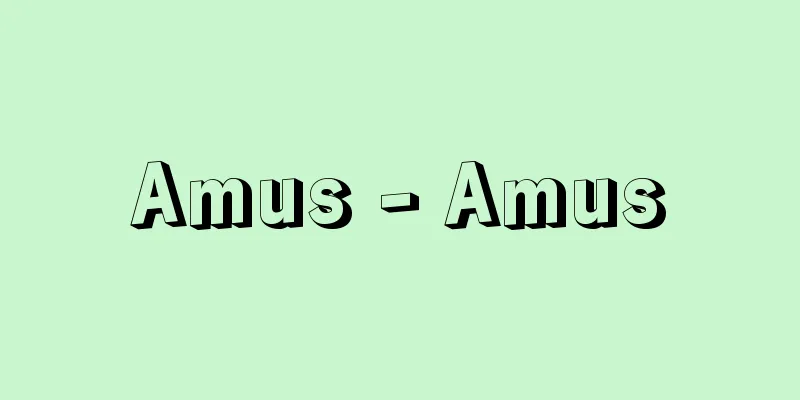Hakushu Kitahara

|
Poet and tanka poet. His real name was Ryukichi. He was active in a wide range of fields, including poetry, tanka, children's songs, popular songs, and folk songs, during the Meiji, Taisho, and Showa periods, and was loved as a national poet. He was born on January 25, 1885 in Okinohata Village, Yamato County, Fukuoka Prefecture (present-day Yanagawa City). His family was an old family that ran a seafood wholesaler and sake brewery, and the nature and scenery of the waterside town nurtured his rich sensitivity during his childhood. While attending the prefectural junior high school Denshukan, he submitted tanka and poems to the Bunko magazine. In 1904 (Meiji 37), he dropped out just before graduating from Denshukan and entered the Waseda University High School Preparatory School. His long poem "Meditation Under the Forest" was highly praised by Kawai Suimei, and his poem "Awakening Poem of the Capital" was selected in a poetry contest held by the Waseda Gakuho and published in the Bunko magazine. In 1906, he was invited by Yosano Hiroshi to join the Shinshisha poetry company. He published a large number of poems and tanka in the magazine "Myojo", but in 1908 he left the group along with Yoshii Isamu and Kinoshita Mokutaro. In December of the same year, young poets and Western-style painters gathered and started a bread club. Hakushu's poem "The sky is red" (included in "Jashumon") was sung at the banquet. In 1909, he published his first collection of poems, Jashumon. Following in the footsteps of Ueda Bin and Kambara Ariake's symbolic poetry, he depicted a world of intense sensations, described as "a mass of melody's troubles," "a sensual pleasure," and "a bitter sleep of the nerves" (inscription on the cover of Jashumon). His 1911 collection of poems, Omoide, begins with the prose "My Life in Hitachi," which outlines the world of his collection of lyric short poems, and continues with a collection of poems that are linked to popular songs and sensual symbolic poems, creating a world of Hakushu's hometown and childhood. This collection of poems further raised his reputation and established his status as a poet, but in terms of his lifestyle, his family went bankrupt and he moved to Tokyo to live with them. In 1912, he was accused of adultery by the husband of his neighbor, Toshiko Matsushita, and was detained at the Ichigaya Pretrial Detention Center. Although he was released on bail after reaching a settlement, he suffered serious psychological damage. In 1913 (Taisho 2), he published his first collection of poems, "Kiri no Hana" (Paulownia Flowers), which drew attention in the world of tanka poetry for its use of symbolic poetry. The collection's "Aishohen" (Sorrow and Scars) is a collection of poems that expresses intense grief over the imprisonment incident. Seeking a new life, he moved with his family to Misaki-cho, Kanagawa Prefecture, accompanied by Toshiko. In the same year, he published his third collection of poems, "Tokyo Scenic Poems and Others" (Poems and Others). "Tokyo Scenic Poems and Others" depicts the scenery of Tokyo during the Pan no Kai period, but continues the style of symbolic poetry and also shows a tendency towards popular songs. After failing in the fish brokerage business, the family moved to Azabu, Tokyo, but Hakushu and his wife remained in Misaki. "Jogashima no Ame" (The Rain of Jogashima) was written during this period and released with music composed by Yanada Tadashi. In February of the following year, he went to Chichijima, Ogasawara, for Toshiko's medical treatment, but returned to Tokyo in July, where he and Toshiko found themselves living in poverty with their family in Azabuzakashita, and separated from her. Muro Saisei, Hagiwara Sakutaro, Yamamura Bocho, and Ote Takuji were active in the magazines Chikyu Junrei (Pilgrimage on Earth) and ARS, which Hakushu founded. During his prolific creative period in Misaki, he published a series of short poems, Shinju-sho (Pearl's tale) and Hakkin no Koma (Platinum spinning top), which sang about the dazzling, light-filled joy of new life, as well as his second collection of tanka, Kirara-shu (Mica collection). In 1916, he married Eguchi Ayako and moved to Katsushika. After living in Dozaka, Hongo, he moved to Odawara in 1918. Suzuki Miekichi's children's literature magazine Akai Tori was launched, and he was in charge of the children's song section, publishing a succession of original children's songs. He was very active as a children's song poet, putting his efforts into collecting children's songs from all over the country, and his life became stable, but in 1920, on the day of the ground-breaking ceremony for the new house, he was allegedly betrayed by his wife, leading to a divorce. The following year, he married Sato Kiku, and found stability in his family life. He published a collection of poetry essays, Senshin Zatsuwa, and a collection of poems, Suzume no Tamago, on the subject of a life of simple poverty, and founded the art magazine, Shi to Ongaku (Poetry and Music) (1922-23), in collaboration with Yamada Kosaku, and the ultra-society poetry magazine Nikko (Nikko) (1924-27), with Maeda Yugure, Toki Zenmaro, and Shakuchoku. In 1926, after moving to the Tennoji cemetery in Yanaka, Ueno, he was active in many ways, such as founding and presiding over the poetry magazine Kindai Fukei (Modern Landscape) (until 1928). In 1928 (Showa 3), he published "Flap Trip," a collection of travelogues inspired by his 1925 trip to Sakhalin and Hokkaido. In April, he visited his hometown of Yanagawa for the first time in about 20 years as part of an "artistic flight" planned by a passenger plane, where he was warmly welcomed. The following year, in 1929, he published "Seal and Clouds," and the Ars edition of "Complete Works of Hakushu," a complete 18-volume series (until 1934), began publication. In 1935, he launched the tanka magazine "Tama," based on the concepts of "new mystery" and "new symbolism," and by advocating the revival of romanticism, he became a new force that divided the tanka world in half with "Araragi." Many poets, including Kimata Osamu and Miya Shuji, came from his school. In 1937, he was involved in selecting poems for the New Manyoshu, but his eyesight deteriorated due to diabetes and kidney disease-related retinal hemorrhage. In 1939, he completed the long vocal poem "Kaido Tosei" (Eastern Expedition of the Kaido) and the Nagauta poem "Genkou (Mongol Invasion)" to commemorate the 2,600th anniversary of the founding of Japan. The following year, he compiled the poem collection "Kurohi" (Black Cypress), which was a collection of twilight poems he had composed during his illness. In 1941, he became a member of the Japan Art Academy along with Shimazaki Toson (who was elected in 1940 but declined) and Kubota Utsubo. He passed away on November 2, 1942. The postscript to his collection of photographs of the water town of Yanagawa, "Composition of Water," was left unfinished as his posthumous manuscript. In addition to collections of poems and tanka, his prolific and diverse creative activities include collections of children's songs such as "The Eyes of the Dragonfly" (1919), a collection of translated children's songs "Mother Guusu" (1921), a collection of popular songs "Nihon no Fue" (1922), and collections of poems and prose. These are all worthy of the name "national poet" Hakushu, both in terms of quality and quantity. [Age Kubo] "The Complete Works of Hakushu, 39 volumes and supplementary volumes (1984-88, Iwanami Shoten)" ▽ "Shincho Japanese Literature Album 25: Kitahara Hakushu (1986, Shinchosha)" ▽ "Japanese Poetry 9: New Edition, Kitahara Hakushu, edited by Murano Shiro (2003, Chuokoron-Shinsha)" ▽ "Kitahara Hakushu by Miki Taku (2005, Chikuma Shobo)" [Reference] | |Source: Shogakukan Encyclopedia Nipponica About Encyclopedia Nipponica Information | Legend |
|
詩人、歌人。本名隆吉(りゅうきち)。明治、大正、昭和における詩、短歌、童謡、歌謡、民謡など幅広い領域で活躍し、国民詩人として親しまれた。 明治18年1月25日、福岡県山門(やまと)郡沖端村(現柳川(やながわ)市)に生まれた。生家は海産物問屋や酒造業を営む旧家で、水郷の自然と風物が幼少年期に豊かな感受性を育てた。県立中学伝習館時代に『文庫』に短歌や詩を投稿。1904年(明治37)伝習館卒業まぎわに中途退学し、早稲田(わせだ)大学高等予科に入学する。長編詩「林下の黙想」が河井酔茗(すいめい)の激賞を得、また『早稲田学報』の懸賞詩に「全都覚醒賦(かくせいふ)」が入選し、『文庫』に掲載される。1906年与謝野寛(よさのひろし)の誘いを受け新詩社に参加。『明星』に詩や短歌を旺盛(おうせい)に発表したが、1908年吉井勇、木下杢太郎(もくたろう)らと脱退した。同年12月、若い詩人や洋画家が集まりパンの会を始めた。白秋の「空に真赤な」(『邪宗門』所収)の歌が饗宴(きょうえん)の場で歌われた。 1909年、第一詩集『邪宗門』を刊行。上田敏(びん)、蒲原有明(かんばらありあけ)の象徴詩の系譜にたちながら、「曲節(メロデア)の悩みのむれ」「官能の愉楽のその」「神経のにがき魔睡」(『邪宗門』扉銘)という濃厚な感覚世界を描き出した。1911年に刊行した『思ひ出』は冒頭の散文「わが生ひたち」によって抒情(じょじょう)小曲集の世界の見取り図を説き、続いて官能的な陰影をもった象徴詩とともに歌謡へと通じる詩編によって白秋の故郷と幼年時代の世界を創出した。この詩集により世評がさらに高まり、詩人としての地位を確立したが、生活面では生家が破産し上京した家族と同居することになる。1912年、隣家の松下俊子の夫から姦通(かんつう)罪で告訴され、市ヶ谷の未決監に勾留(こうりゅう)される。示談が成立し保釈となったが、深刻な精神的ダメージを受けた。 1913年(大正2)第一歌集『桐(きり)の花』を刊行、短歌の世界に象徴詩の手法を生かして注目された。歌集中の「哀傷篇」は下獄事件にかかわる激しい慟哭(どうこく)が詠まれている。新生を求め俊子を伴い、一家をあげて神奈川県三崎町に移住。同年第三詩集『東京景物詩及其他(およびそのた)』も刊行する。『東京景物詩及其他』はパンの会時代の東京景物を描いているが、象徴詩を引き継ぐとともに歌謡への傾向も示している。魚類仲買業に失敗した一家は東京の麻布(あざぶ)に転居するが、白秋夫妻は三崎にとどまる。「城ヶ島の雨」はこの時期につくられ、梁田貞(やなだただし)の作曲で発表された。翌年の2月、俊子の転地療養ということで小笠原(おがさわら)父島に渡るが、7月には帰京し、麻布坂下での一家同居の貧窮生活のなかにあって俊子と離別する。白秋が創刊した雑誌『地上巡礼』や『ARS(アルス)』では室生犀星(むろうさいせい)、萩原朔太郎(はぎわらさくたろう)、山村暮鳥、大手拓次らが活躍した。旺盛な創作期であった三崎時代の絢爛(けんらん)とした光満ちあふれる新生の歓喜を詠んだ短唱集『真珠抄』や『白金之独楽(はっきんのこま)』、第二歌集『雲母(きらら)集』を相次いで刊行した。 1916年、江口章子(あやこ)と結婚し、葛飾(かつしか)に転居。本郷動坂(どうざか)での生活を経て、1918年に小田原に移住。鈴木三重吉(みえきち)の児童文学雑誌『赤い鳥』が創刊され、童謡部門を担当し、創作童謡を次々発表する。全国のわらべ歌の収集に力を尽くすなど童謡詩人としての活動が旺盛になされ、生活も安定するが、1920年新築地鎮祭の日、妻に叛(そむ)かれたとされる事件により離婚。翌年、佐藤キク(菊子)と結婚し、家庭的な安定を得た。詩歌論集『洗心雑話』、清貧生活を題材にした歌集『雀(すずめ)の卵』を刊行し、山田耕作(筰)(こうさく)との共同の芸術雑誌『詩と音楽』(1922~23)、前田夕暮(ゆうぐれ)、土岐善麿(ときぜんまろ)、釈迢空(しゃくちょうくう)との超結社歌誌『日光』(1924~27)を創刊する。上野谷中(やなか)の天王寺(てんのうじ)墓畔に転居した1926年には、詩誌『近代風景』(~28)を創刊主宰するなど旺盛な活動を示している。 1928年(昭和3)には、1925年の樺太(からふと)、北海道の歴遊から題材を得た紀行集『フレップ・トリップ』を刊行。4月、旅客機による「芸術飛行」の企画により約20年ぶりに郷里柳川を訪問し、熱烈な歓迎を受けた。翌1929年には『海豹(かいひょう)と雲』を出版し、またアルス版『白秋全集』全18巻(~1934)が刊行開始となる。1935年「新幽玄」と「新象徴」を理念とした短歌雑誌『多磨(たま)』を創刊し、浪漫(ろうまん)主義の復興を唱えることで「アララギ」と歌壇を二分する新勢力となる。門下に木俣修(きまたおさむ)、宮柊二(しゅうじ)ら多くの歌人を輩出した。1937年『新万葉集』の選歌に携わるが、糖尿病、腎臓(じんぞう)病による眼底出血により視力が衰える。1939年、紀元二千六百年記念・長篇交声詩「海道東征」や長唄「元寇(げんこう)」を完成。翌年、病中の薄明吟を集めた歌集『黒檜(くろひ)』をまとめた。1941年島崎藤村(とうそん)(1940年に選任されたが辞退)、窪田空穂(くぼたうつぼ)とともに芸術院会員となる。昭和17年11月2日死去。水郷柳河(やながわ)写真集『水の構図』の跋文(ばつぶん)が未完の遺稿となった。詩集、歌集のほか『とんぼの眼玉(めだま)』(1919)などの童謡集、翻訳童謡集『まざあ・ぐうす』(1921)、歌謡集『日本の笛』(1922)、詩文集など多彩で旺盛な創作活動は、質量ともに国民詩人白秋の名にふさわしい。 [阿毛久芳] 『『白秋全集』全39巻・別巻(1984~88・岩波書店)』▽『『新潮日本文学アルバム25 北原白秋』(1986・新潮社)』▽『村野四郎編『日本の詩歌9新装 北原白秋』(2003・中央公論新社)』▽『三木卓著『北原白秋』(2005・筑摩書房)』 [参照項目] | |出典 小学館 日本大百科全書(ニッポニカ)日本大百科全書(ニッポニカ)について 情報 | 凡例 |
<<: Kitahiyama [town] - Kitahiyama
Recommend
Nanocnide japonica Bl.
A perennial plant of the Urticaceae family that gr...
Gasho
...There are dongxiao of various lengths, but unl...
Emil Zátopek
A Czech long-distance runner. At the 15th Olympic...
Payment place - Shiharaibasho
Generally, it means the place where payment is to ...
Mr. Kakizaki
The former name of the Matsumae clan, feudal lord...
Card games
…(3) German and Austrian. Grün (leaf), Herz (hear...
Kenji Doihara
A military officer in the Meiji, Taisho and Showa...
Takayasu style
〘Noun〙① A school of supporting actors in Noh. Its ...
Faddey Venediktovich Bulgarin
1789‐1859 A Polish-born Russian journalist and aut...
Menstrual abnormalities -
What kind of disease is it? <Pay attention if ...
Bond length
The length of a chemical bond, that is, the distan...
Journey - Dotei
This is the first collection of poems by Takamura...
"Edo Mirror"
...A small book that lists the names, home provin...
Elben, KJ - Elben
…A Central European republic that existed from 19...
Fonda, Jane
Born December 21, 1937 in New York, New York. Amer...









